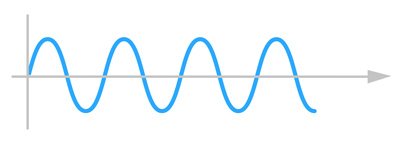Choosing the Correct LVDT Frequency for Your Application
Written by transtek_admin on 04/28/2022

Linear variable differential transformers (LVDTs) are known to be extremely accurate devices for measuring linear distances. They are used in a variety of applications and industries to measure vibration, stress testing, actuator movement, and much more. However, it is important to note that maximum performance and accuracy are best achieved when an LVDT is excited at a particular frequency that is right for the application.
What Effect Does the Frequency Have on Overall Performance?
Interestingly, there are no set standards when it comes to frequency. It could be as little as 1, 3 kHz or higher, such as 5, 7, 10 kHz. But why are some at 3 kHz and others at 10 kHz if 10 is faster? Why not put them all at the higher frequency instead of the lower one? It all comes down to stroke length and the limitation of being able to move some of the units only so quickly. In general, for shorter units, you’ll need a higher frequency. For instance, our Series 210-220 Long Stoke LVDTs handle up to 20 inches total stroke, and should be excited with a 7 kHz voltage. Longer stroke units would require less, typically 3 kHz.

LVDTs are inductors, so keep in mind that additional parameters will change with frequency, such as impedance. Others will shift as well including linearity and temperature coefficient. While it’s difficult to predict exactly how these factors are affected, they generally follow trends as frequency increases or decreases. A unit must be tested and have all factors measured to see the actual net impact.
What Happens if You Use the “Wrong” Frequency?
To answer this, we must first understand that there is a tradeoff: the faster you go, the less sensitive the measurement will be. In this case, sensitivity is essentially the opposite of frequency, ie they are inversely proportional. Of course, in an ideal world, you would be super sensitive and super fast. But this is simply not the case. You will need to experiment a bit to find the sweet spot that achieves the proper balance. In some cases, it might be ok if one is much higher. For instance, if you are measuring something that is moving rather slowly, you can adjust the frequency to achieve much higher sensitivity. If the frequency is set too high for a particular application, sensitivity may be reduced to undesirable levels, thus limiting practical resolution. In summary, it’s important to understand the affect that the chosen excitation frequency has for a specific use. Keep in mind that there’s a tradeoff between it and sensitivity. Ultimately, the optimal choice will depend on the application itself and the desired data collection and output requirements.
